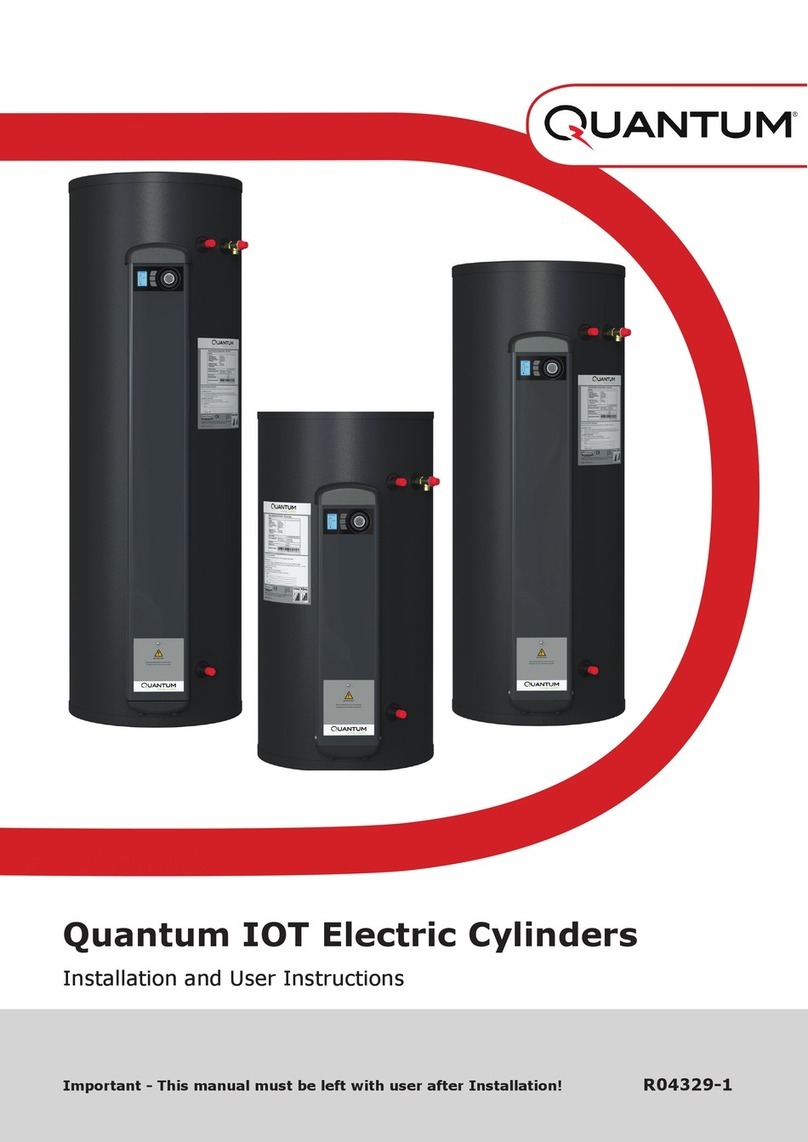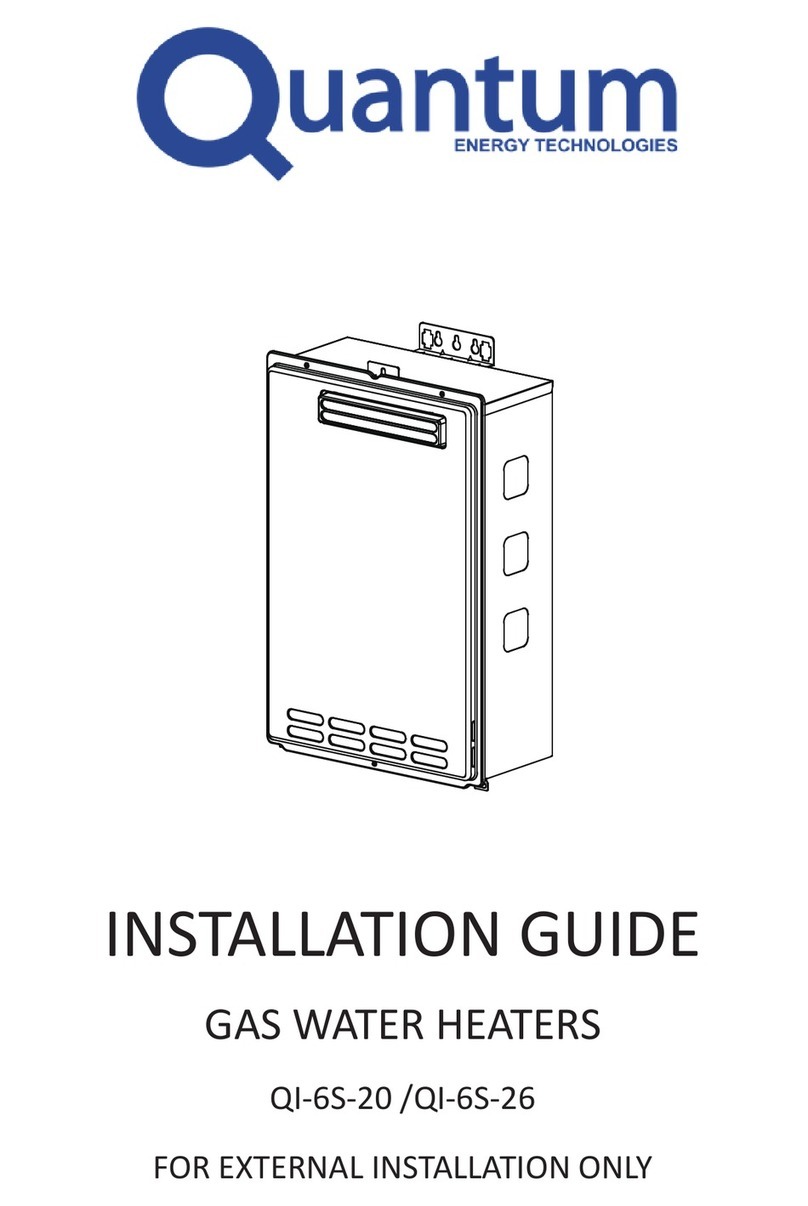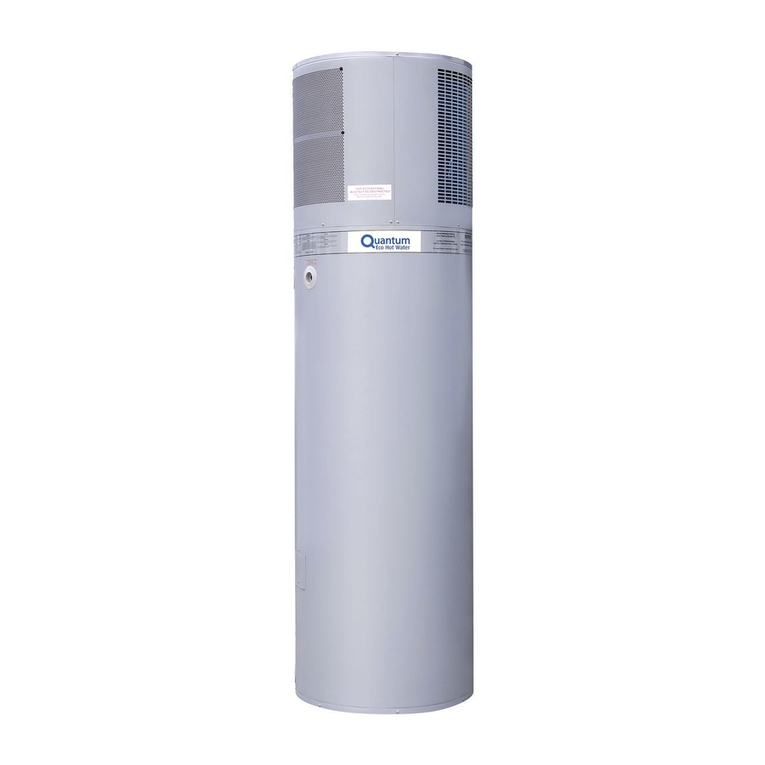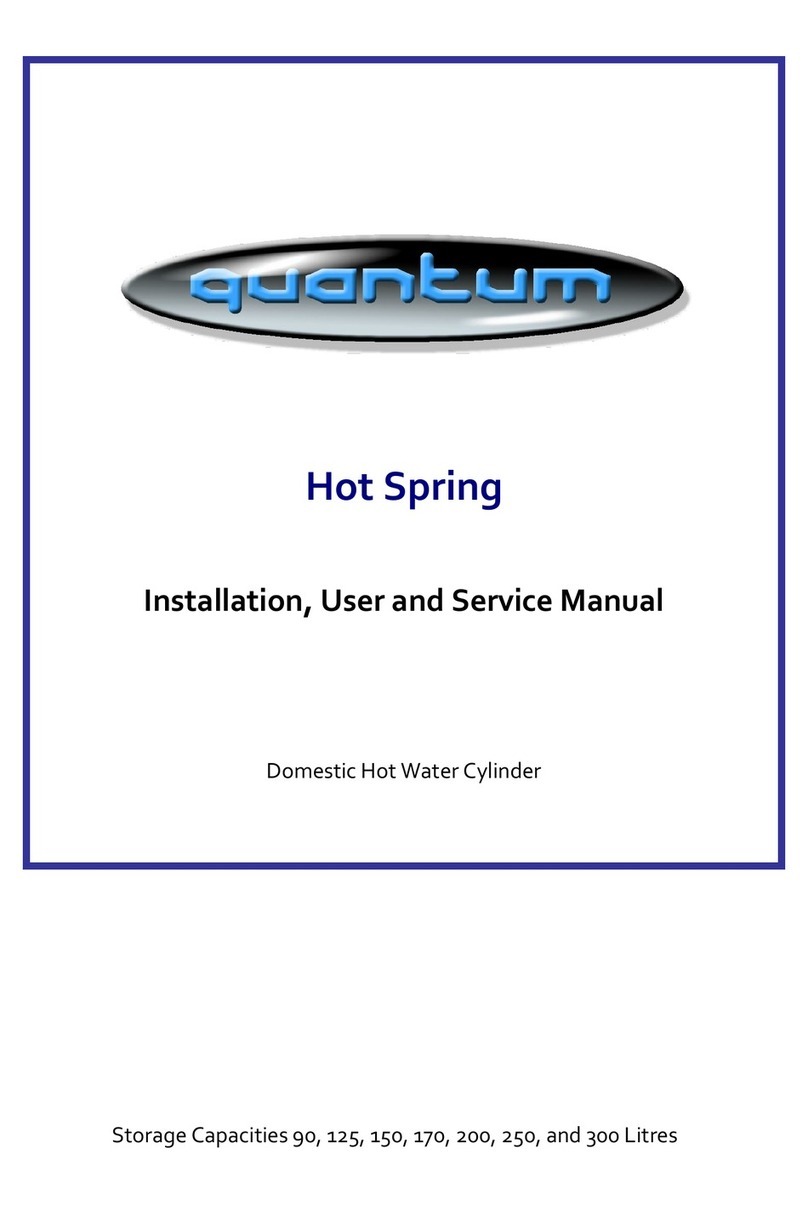
Owner’s Manual Quantum Energy Technologies
Document number: QDC0030PD-16.4 Page 8 of 36
acceptable. The separate evaporator in the split models could be located externally or in a large
well-ventilated ceiling space or garage.
3c: Evaporator Drain
During operation a certain amount of condensate water will flow from the evaporator drain. If
allowed to simply flow out of the outlet, this water may pool below the unit and can cause
problems to the water heater and/or area around it. The evaporator drain on both the Compact and
Split Air units should be drained to a suitable location. This can be accomplished with a length of
hose or pipe but must not be connected directly to the PTR valve or expansion valve drain.
3d: Pressure & Temperature Relief Valve (PTR)
The Pressure and Temperature relief valve (see tank data plate for rating), which is supplied with
the unit, must be fitted and made accessible so that the release mechanism can be operated and, if
required, the valve replaced. The outlet of the PTR valve must be suitably drained to remove the
water discharged during the normal heating cycle. The valve thread is RP ½” / 15mm and must be
installed into the top front socket.
Warning: A separate drain line must be run for this relief valve. It is not permitted to couple the
drain lines from the relief valve and evaporator into a single common line. The use of a tundish
under the evaporator drain with this then connected to the drain of the PTR valve is acceptable.
3e: Expansion Control Valve (ECV)
Where an Expansion Control Valve is fitted to the cold water supply, the ECV should be rated at
150kPa lower than the Pressure & Temperature Relief valve (PTR). It is a State requirement for
SA & QLD that an ECV be fitted on the cold water supply line between the non- return
valve and the water heater.
3f: Cold Water Connection
An approved isolating valve, approved non-return valve, line strainer (optional but recommended),
and union must be fitted between the supply main and the RP ¾ / 20mm socket in the water heater.
All fittings must be approved by the relevant Authority (refer to Figures 1 & 2).
3g: Pressure Reducing Valve
This water heater is designed for direct connection to a maximum water supply pressure of 800kPa.
Where the mains pressure can exceed or fluctuate beyond this pressure, a pressure-limiting device
(complying with AS1357) must be fitted in the cold-water supply line. This device must be
installed after the isolating valve and set at or below 500kPa (or 350kPa if a 850kPa expansion
control valve fitted). An ECV is fitted when the water supply has a tendency to form scale. This
type of water is referred to as scaling water because calcium carbonate is deposited out of the
water onto any hot metallic surface. The fitting of an ECV is mandatory in WA, SA and some other
areas of Australia as dictated by local regulations.
3h: Caution Regarding Glass Lining Of Tank
When making the hot and cold water connections to the tank care should be taken not to apply
excessive strain as damage to the tank spigots or glass lining may occur.
3i: Suitability For Installation In Frost Areas
The R134a refrigerant used has a boiling point of –26°C so there is no risk of damage to the heat
pump from frost. Performance may be reduced in very low temperatures but the system will not
be damaged by such climatic conditions.































